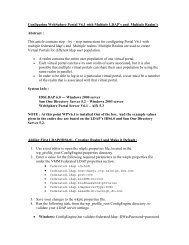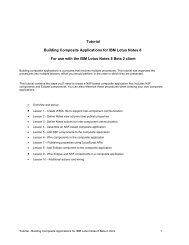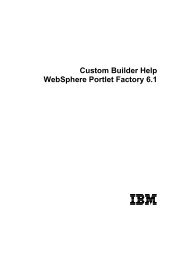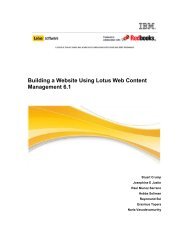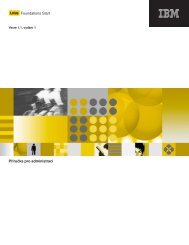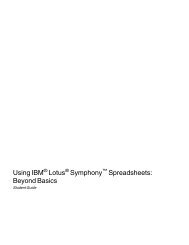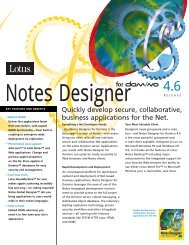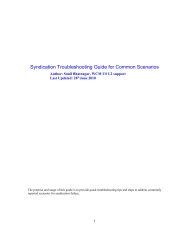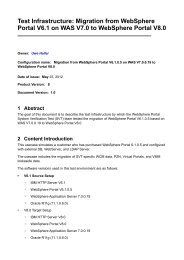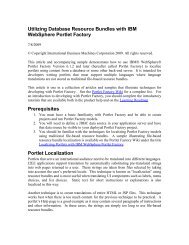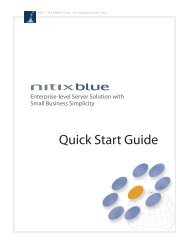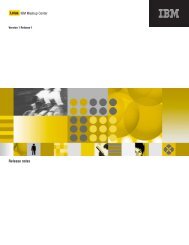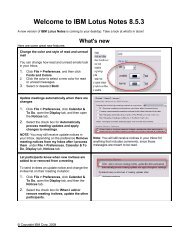IBM WebSphere Portlet Factory Overview - Lotus
IBM WebSphere Portlet Factory Overview - Lotus
IBM WebSphere Portlet Factory Overview - Lotus
You also want an ePaper? Increase the reach of your titles
YUMPU automatically turns print PDFs into web optimized ePapers that Google loves.
Note that the HTML layout pages that ship with the product contain named tagsthat indicate where key controls should be placed. If you want to move thecontrol to a different place on the page, simply move the named tag within theHTML file. If you supply your own HTML file and you discover that a control isnot appearing (but used to appear with the default HTML page), you probablydo not have the right tag name in your file.For example, the View & Form builder uses a default layout page with thefollowing named tags:You can create your own copy of this layout page and add any other HTML youwant on your pages. For example, if you want additional static text or graphicsaround the data area, you can add it here by putting it before and after the tablenamed “data”. Then you can specify your page in the View & Form builder,and that builder will insert the JSP code at the specified name tag locations.Typically, developers will only make small modifications (if any) to the HTMLfiles. They will create, for example, one default page from a builder for all oftheir portlets by copying and pasting the default page that comes with theproduct. This same page will then be used each time a developer on the teamadds the builder to a model. Note that in this scenario, the developers are usingthe page generation capabilities in <strong>WebSphere</strong> <strong>Portlet</strong> <strong>Factory</strong> to generatemuch of the user interface.Every so often, developers want to have pixel-level control over the placementof each field and control on the page (to the extent that browsers allow), andcannot achieve the desired look with the default HTML pages, HTML templates(described below), and the combination of modifier builders (like Rich DataDefinition, and so on). In these rare scenarios, developers can create their owncustom HTML pages that contain tags for each field that needs to be displayed.For example, suppose you want to create a page that displays order details,such as Order Number and Amount. The most common way to do this is toleverage the page automation capabilities of the tool to generate the tags (suchas order_number) into the HTML page. If you do not want to leverage the pagegeneration capabilities of the product, you can supply your own HTML thatcontains all of the tag names (like order_number) that you want to see on thepage. Note that the tag names must match the names within the associatedschema. Also note that this approach hard-codes tag names into your page. Ifthe underlying data or schema changes, you must update your HTML to reflectthe new tags.<strong>WebSphere</strong> <strong>Portlet</strong> <strong>Factory</strong> V6.0.1 Getting Started Guide - 39 -



